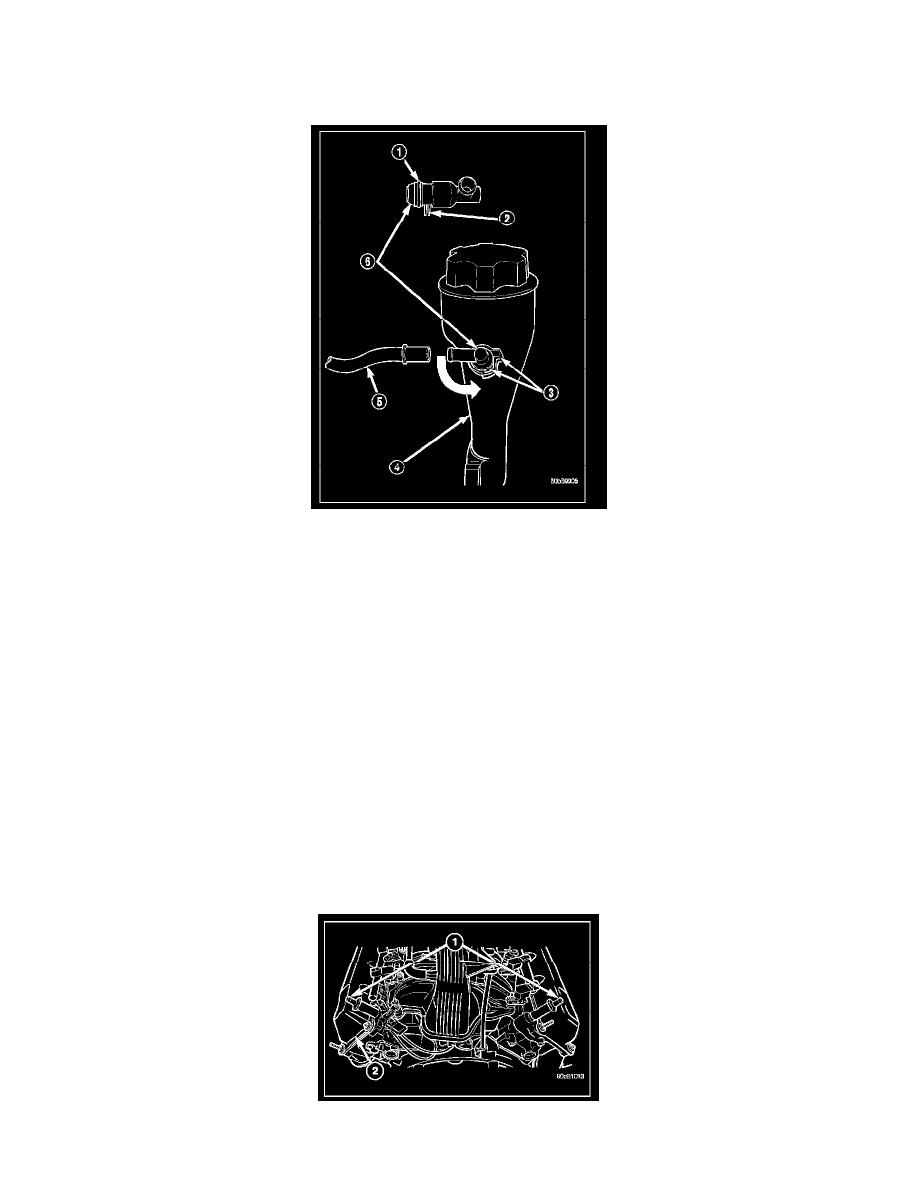Raider V6-3.7L SOHC (2006)

Positive Crankcase Ventilation Valve: Testing and Inspection
DIAGNOSIS AND TESTING
PCV VALVE - 3.7L V-6/ 4.7L V-8
The PCV valve (6) is located on the oil filler tube (4). Two locating tabs are located on the side of the valve (2). These 2 tabs fit into a cam lock (3) in
the oil filler tube. An O-ring (1) seals the valve to the filler tube.
1. Disconnect PCV line/hose (5) by disconnecting rubber hose at PCV valve fitting.
2. Remove PCV valve at oil filler tube by rotating PCV valve downward (counter-clockwise) until locating tabs (2) have been freed at cam lock (3).
After tabs have cleared, pull valve straight out from filler tube. To prevent damage to PCV valve locating tabs, valve must be pointed downward
for removal. Do not force valve from oil filler tube.
3. After valve is removed, check condition of valve O-ring (1).
4. Reconnect PCV valve to its connecting line/hose.
5. Start engine and bring to idle speed.
6. If valve is not plugged, a hissing noise will be heard as air passes through valve. Also, a strong vacuum should be felt with a finger placed at valve
inlet.
7. If vacuum is not felt at valve inlet, check line/hose for kinks or for obstruction. If necessary, clean out intake manifold fitting at rear of manifold.
Do this by turning a 1/4 inch drill (by hand) through the fitting to dislodge any solid particles. Blow out the fitting with shop air. If necessary, use
a smaller drill to avoid removing any metal from the fitting.
8. Do not attempt to clean the old PCV valve.
9. Return PCV valve back to oil filler tube by placing valve locating tabs (2) into cam lock (3). Press PCV valve in and rotate valve upward. A slight
click will be felt when tabs have engaged cam lock. Valve should be pointed towards rear of vehicle.
10. Connect PCV line/hose (5) and connecting rubber hose to PCV valve.
11. Disconnect rubber hose from fresh air fitting at air cleaner resonator box. Start engine and bring to idle speed. Hold a piece of stiff paper (such as
a parts tag) loosely over the opening of the disconnected rubber hose.
12. The paper should be drawn against the hose opening with noticeable force. This will be after allowing approximately one minute for crankcase
pressure to reduce.
13. If vacuum is not present, disconnect each PCV system hose at top of each crankcase breather (1). Check for obstructions or restrictions.
